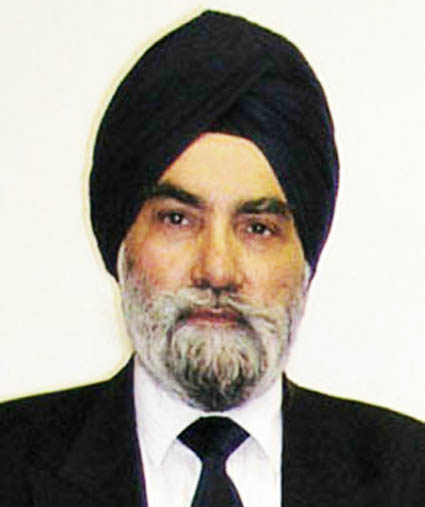Guru Nanak-Jot, Guru Gobind Singh

For this purpose was I born: To spread righteous living, to raise the saintly people and to destroy the evil doers. (Guru Gobind Singh, Bachittar Natak)
The achievements of a great temporal-spiritual leader like Guru Gobind Singh become clearer as the significance of these is seen through the prism of his times. He was a saint-warrior, poet, nation-builder and a living martyr who sacrificed his entire family (sarbans daan) for his beloved Khalsa.
Much has been researched and written about the life and achievements of Mard-Agamra, Guru Gobind Singh. Yet, it cannot be overstressed that our focus on the Tenth Nanak in human form should not detract from the essential Guru Jot-Jugat continuity: the same Guru-Light radiated from each Guru-person and showed the Miri-Piri (spiritual-temporal) path of Sikhi. The tradition is described in Guru Granth Sahib that the One Light []]of Guru Nanak] was the same, the method the same the Sovereign just changed His body. (ਜੋਤਿ ਓਹਾ ਜੁਗਤਿ ਸਾਇ ਸਹਿ ਕਾਇਆ ਫੇਰਿ ਪਲਟੀਐ).
That tradition gives us One Guru concept which is essential for Panthic unity. A Sikh of Guru Nanak is also the Sikh of Guru Gobind Singh because the Guru in Sikhi is not divisible. Ultimately the Guru is the Dasan Guruan di Jot, the Light of the Ten Guru-persons, Guru Granth Sahib. The concept &ndashOne Divine Light in Ten &ndash needs to be understood and accepted by every Sikh. That is the true Panth of the Khalsa, non other.
The literature associated with Guru Gobind Singh has become a controversial issue. That should not be the case. The strategy followed by Guru Gobind Singh was the same as that of the earlier Gurus starting with Guru Nanak. Each Guru-person energised a downtrodden people by reminding them of their own heritage by making available to them in common language the Vedic literature and lore about the great deeds of their own Indic folk heroes: the mythological gods and goddesses, who (in their belief system) were the forces of good who had fought and destroyed the forces of evil.
The literature associated with Guru Gobind Singh should be seen as continuation of the same allegorical approach. However, as earlier Gurus, he too made it clear that Guru-Nanak-Gobind Panth did not follow the old ways and that he was the servant of none other than the One Supreme Timeless Unborn Creator Being. Arrogant positions for and against the literary works associated with the Guru Gobind Singh, miss the point.
Yet, in another sense, the Vedic literature made available in common language exposed the ancient myth and lore to the scrutiny of the more discerning. The Brahmanic (Bipran) ways were rejected as divisive, ignorance-spreading and the main reason for the subjugation of the Indian sub-continent. Many decided to join the expanding ranks of the mar-jeevra (reborn) Khalsa.
From Guru Nanak Sahib onwards, the Guru-Jot warned that Sikhi was a challenging and difficult path of love and sacrifice to follow. It demanded the ego-centric head! A Path of inner detachment while remaining fully participative in the world-play. It was about social activism and it unequivocally rejected the opt-out lifestyle of the Indic systems.
Like work-in-progress, we shall continue at our own pedestrian pace to comprehend the great contribution of Guru Gobind Singh. The diversity within the Panth should seek common direction following in the footsteps of the Guru.
Gurmukh Singh OBE
Principal Civil Servant retd. (UK)